How to Write Compelling Ad Copy
What you’ll learn
- How to turn your value props into compelling ad copy suitable for all social channels, and specific to targeted audiences.
Why is it important?
Ad copy is nothing like writing an email. Or an essay. Your ability to string sensible thoughts together into sentences does not mean you can write good ad copy - the kind of copy that gets people to stop scrolling through their feed.
This is a skill. Fortunately, it is a skill that can be learned, no matter your comfort level with writing. And that’s actually what you’ll accomplish here.
Overview
In the strategy section of our course, we had you brainstorm value props, which will serve as the foundation of your ad copy.
As you begin this writing phase, be sure to keep that spreadsheet readily available, ideally in a separate window.
Also, it’s best if you have an idea of who you’re targeting with your ads. Use the audiences you brainstormed in our Strategy section. Your value props help you know what you’re pitching. Now it’s important to know who.
Open up a blank document (at Demand Curve, we prefer to work with Dropbox Paper for its simple, clean interface). Copy the material found in this Ad Copy Template. This is the template we use with all of our clients as we brainstorm ad copy variations.
Let’s break down this document bit by bit.

Ad copy is never set it and forget it. You’ll never create the perfect ad. But with constant refining, you can keep improving your ads.
The process you learn in this lesson should be repeated periodically. Only then can you continue to see a solid return on investment for your ads.
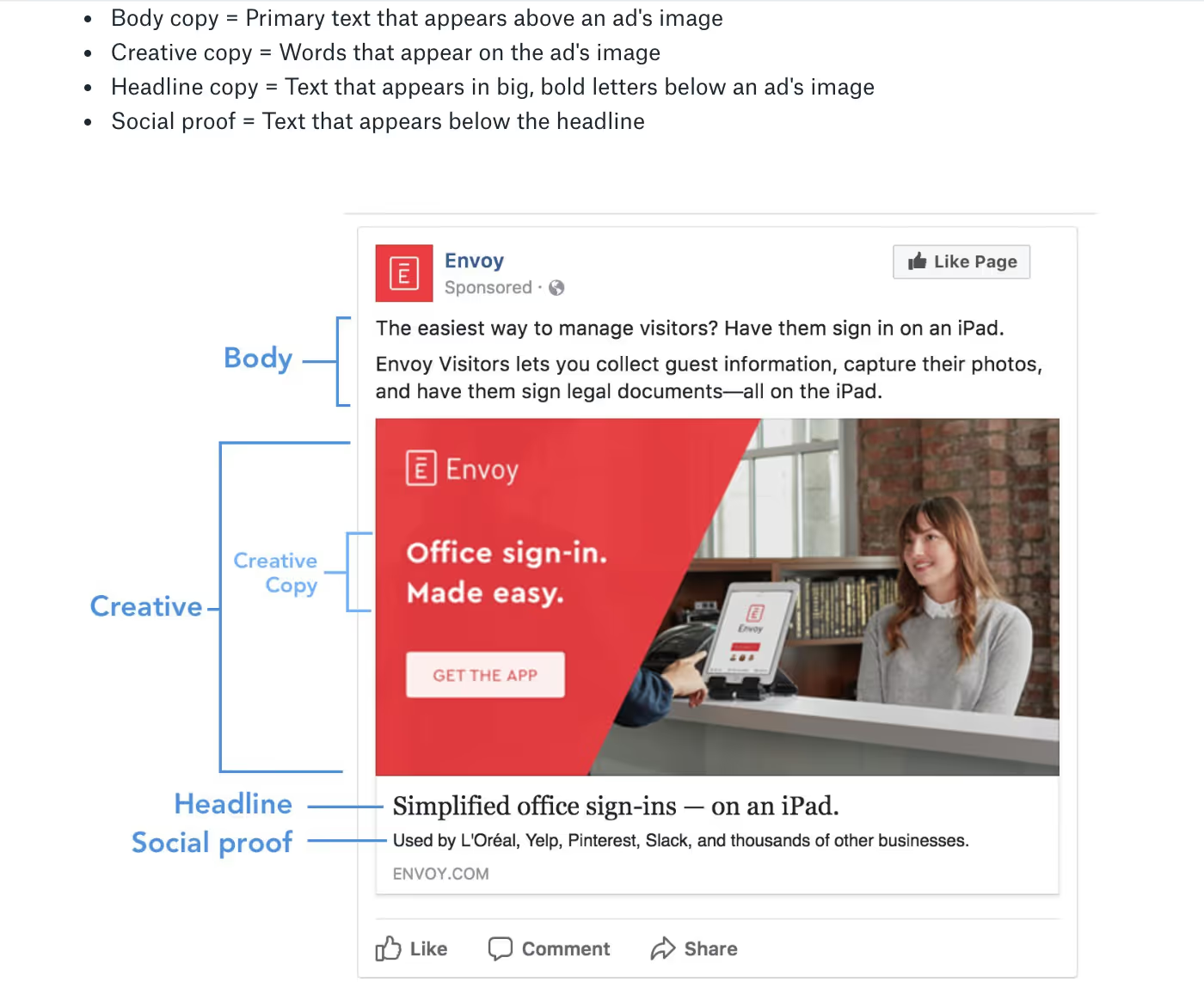
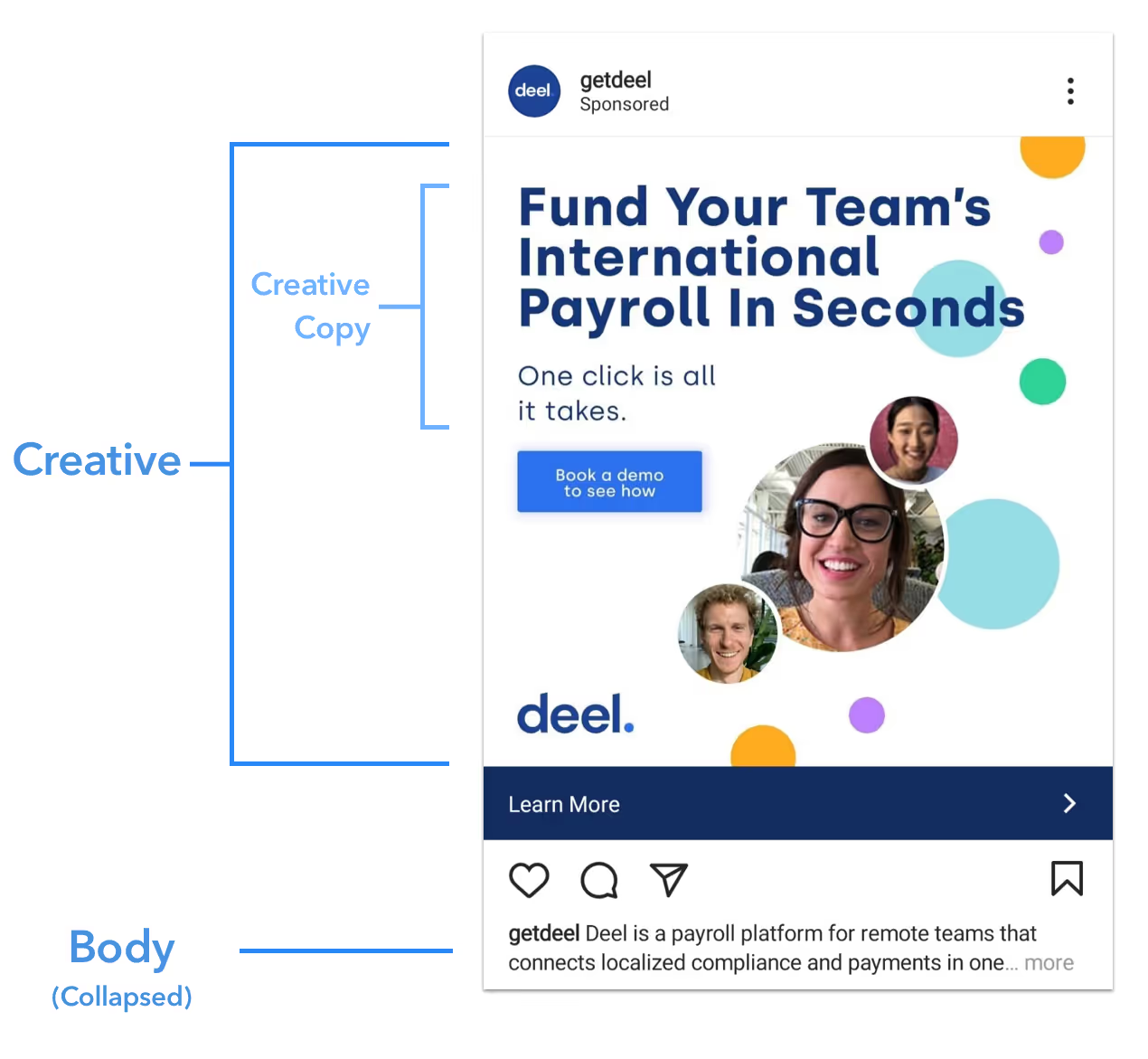
The section above shows the different parts of an ad on Facebook and Instagram. You’ll create copy for each of these parts. Some social channels don’t need every part.
But they all require a headline and body, at the very least. We write every part for all of our clients.

Some ad channels have specific character limits. For example, Facebook headlines should be fewer than 40 characters, if you want to ensure the headline remains on one line.
This section of the template gives you a breakdown of the character limits. You can use our character counter spreadsheet to count the length of each ad copy element.
Writing ad copy variations
The remaining part of our template is dedicated to the actual ad copy. Let’s turn our attention to that task now.
Staring at a blank screen is intimidating. Even with clear value props in hand, you may not know how to craft the type of copy designed to convert.
That’s why when we create ad copy for clients, we often apply specific strategies to simplify the process. These strategies have been tested over time and are proven to be the most effective forms of ad copy. Regardless of your specific niche.
When you’re ready to write your ad copy, you’ll see in the template there are separate table ‘blocks’ to place your copy in.
The first block, or section, you’ll see is “General Copy.”

This is copy that can be used with the widest possible audiences.
It’s important to brainstorm general ad copy variations (copy not specific to any one audience). Brainstorming general variations is a good practice to identify your most prominent value props, and it allows you to execute ads to the widest possible audience, when you need.
You’ll also see a section in each block for carousel ads. This is a carousel ad:
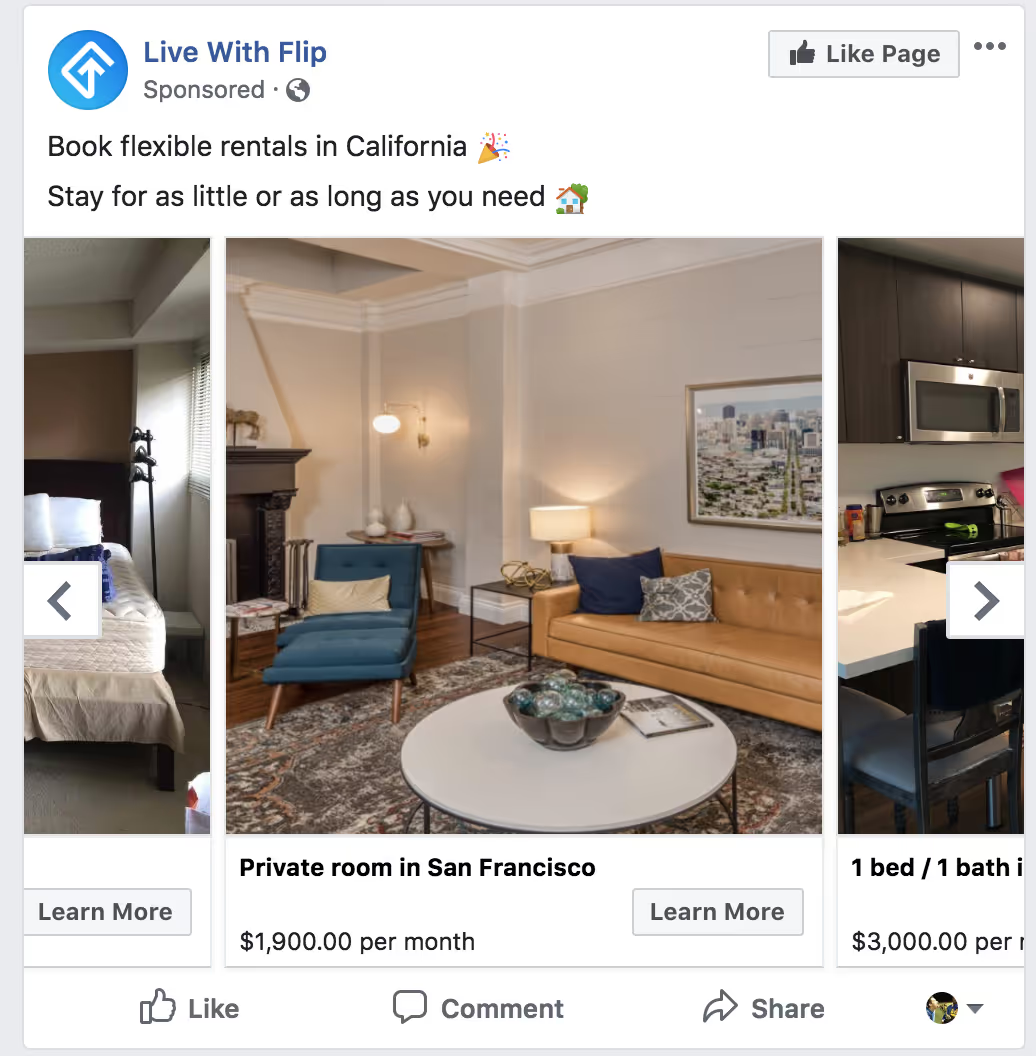
Carousel ads allow you to show multiple images or videos in a single ad. Each image/video has its own headline (and opportunity for creative copy). But they have the same body copy.
You don’t need to fill out ad variations for carousel ads if you're not planning to run ads on Facebook and Instagram. But if you are, we recommend it. These ad types can be very effective.
The outline below is applicable whether you’re writing general copy, or copy specific to an audience.
1. Creative copy
Each ad block on the template starts with the creative.
Your creative copy should either summarize the product, or focus on the your specific audience’s biggest anxieties, as succinctly as possible. Keep it to two to seven words, with rare exceptions.
It should almost always hit a value prop. You’ll often (but not always) want to add CTAs to your creative — see "Learn More" in the Kip example below. We've found they convert about 15% better.
Here are a few examples of real creatives we've made for clients, one of which includes a CTA (Kip’s “Learn More”):
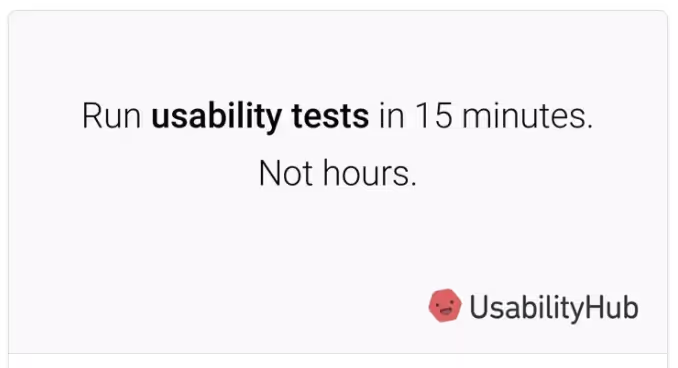
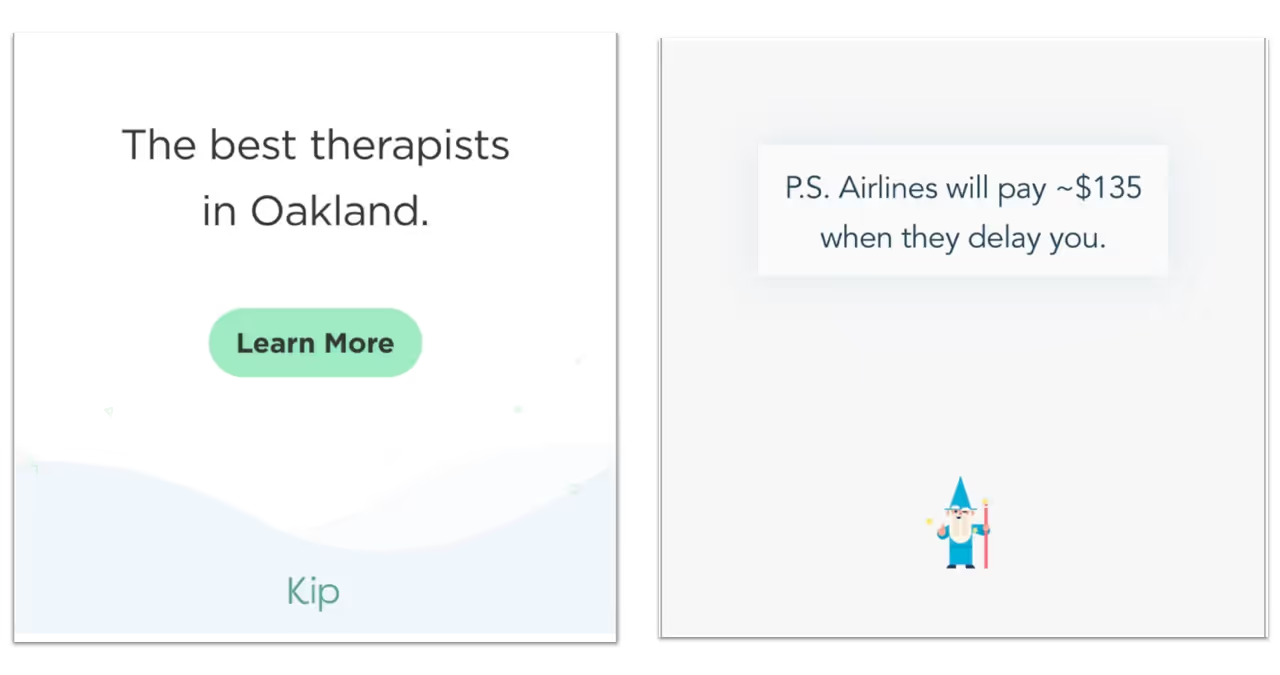
The examples above have little to no ‘design.’ We've found that these types of ads convert best (more on this in our ad creative section).
2. Headline copy
We've found a few specific formulas that work best for headline copy:
- A headline that focuses on the target audience’s biggest anxieties (pull these from the problem and implication sections of your value props sheet).
- A headline that focuses on the solution and benefits of your product.
- A straightforward description of the product itself.
- A headline that focuses on social proof: ratings, press, famous customers, testimonials, etc.
Keep the headline to 50 characters or less.
Tips as you write headline copy:
- If the headline is one sentence, don’t end it with a period.
- If it’s two sentences or more, use periods.
- We've found headlines that use “the only … in the world”, as in “the only organic dog food in the world”, convert particularly well.
Here are a few examples of real headlines we've used for clients:



3. Body copy
Each ‘block’ in your ad template has three length options:
- Short body copy variations: (150 characters and less)
- Medium body copy variations: (150 - (roughly) 250 characters)
- Long body copy variations: (250+ characters)
You might think short copy outperforms the others. But our data tells us otherwise. That’s why it’s a good idea to come up with at least a couple of variations for each body length.
The more you test, the more you’ll know.
By the way, when you do come up with long body copy variations, it’s best to follow this formula:
- Hook
- Product/service explanation
- Handle objections
- Write in a CTA
Example:
You say you’re going to cook dinner. But you don’t have the time.
Microwave dinners? Yeah, they’re quick. But have you looked at the ingredients? You’re not going to get healthier eating those.
The Tovala Steam Oven makes it easy to eat delicious gourmet meals without having to cook, clean, or complain. How?
We send you a box of gourmet meals. Plus our companion smart oven. Each meal is cooked to perfection in 20 minutes or less.
You don’t do a thing. Well, except eat a home-cooked meal. Without having to cook.
Choose your meal plan in seconds. Start eating healthy meals (without the hassle) by next week.
When creating body copy, here are the strategies that we've found to convert best:
Explain how your product/service works. Step-by-step.
Here’s how Streak works:
▶️Install it in 2 clicks. For free.
▶️In seconds, your Gmail inbox converts into a complete CRM. So you can manage leads, conversations, and more. All from a UI you already know And use daily.
▶️Know exactly when someone opens your email. And from what device.
▶️Schedule emails to increase open rates.
▶️Save your best performing emails as Snippets. So you can send more cold emails. Faster.
▶️Personalize your emails with Mail Merge.
Streak turns your inbox into the CRM you always wished it would be.
And the best part - it’s free.
(Note: emojis tend to perform pretty well in ad copy — it’s fine to include them.)
Articulate problem, solution, and benefit.
"Kip makes therapy more effective by helping you track your weekly progress through self-assessments. No more guessing whether you're improving.”
Highlight differentiation (from competitors)
“The only automatic visitor logbook.”
Use a judgmental question.
“Your office doesn’t sign in visitors automatically?”
Use a quote that someone would use to talk about the problem.
“Yeah, we kept their CEO waiting for way too long.
No wonder we lost the deal.”
Reference big numbers and good reviews:
“#1 on Yelp”
Ask a pressing question
Did you know airlines will pay you ~$135 when they delay you?
Match one of your value props to a specific audience
Cost — "The only full-featured, 4K camera that’s affordable [quality] on a student’s [audience] budget."
Powerful — "The only language learning tool with the advanced [quality] features hardworking students [audience] need to master French, Chinese, and more.”
Simple — "The analytics tool powerful enough for developers [audience] but built with a super intuitive [quality] interface for marketers [audience].”
Make a statement your readers emotionally agree with. Then provide a solution
Example: Training RNC’s sucks butt. Here’s a solution.
Compare your product/service against the status quo
Meaning, focus on how the current way to solve the problem sucks.
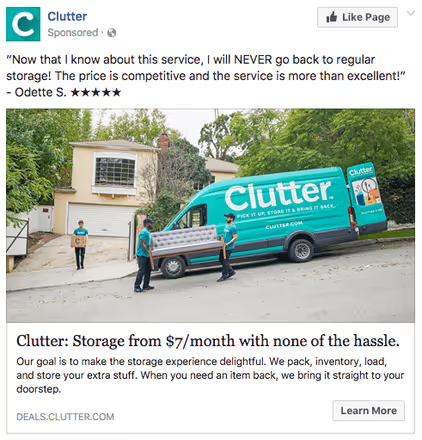
3b. Don’ts.
- Don’t use vaguaries.
- Example: “At Bing Surfboards, we make your surf trip easier”.
- An easier life is something anyone can pitch.
- Instead, be specific about how the Bing Surfboard product actually makes your life easier: by having the lightest surfboard on the planet, which means you aren’t grunting pain and wasting energy every time you lug it to the beach from your car.
- Don’t use cliche phrases like “earn more money” and “change your life”.
- Don’t use exclamation marks. They turn on people’s “this is salesy” reflex and treat you like spam.
- Don’t try to be cute.
- There was an ad for a New York taxi service that read: “If you hate waiting, raise your hand.”
- Instead, it should focus on how the drivers are safer than a car sharing service (because of insurance, background checks, etc.), as well as a shorter time-to-pickup and more comfortable seating.
- Don’t ask generic questions: “Do you like saving money?”
- Instead, ask questions that prompt responses like, "Wow, I didn't know that" and "No, tell me more..."
- Better: “Did you know airlines will pay you ~$135 if you get delayed? “
- Don't ever write “tag someone” in the ad text, headline, or link description - your ad won’t deliver properly and be flagged as “poor quality” by most channels.
4. Write the social proof section
Now write the social proof section for each of your value props. It should emphasize social proof: famous companies using, big numbers, selectivity, etc.
Examples:
- The error tracking tool trusted by AirBnb and Microsoft
- Over 50,000,000 emails available
- How Michelle Obama and Hillary Clinton reach their fans
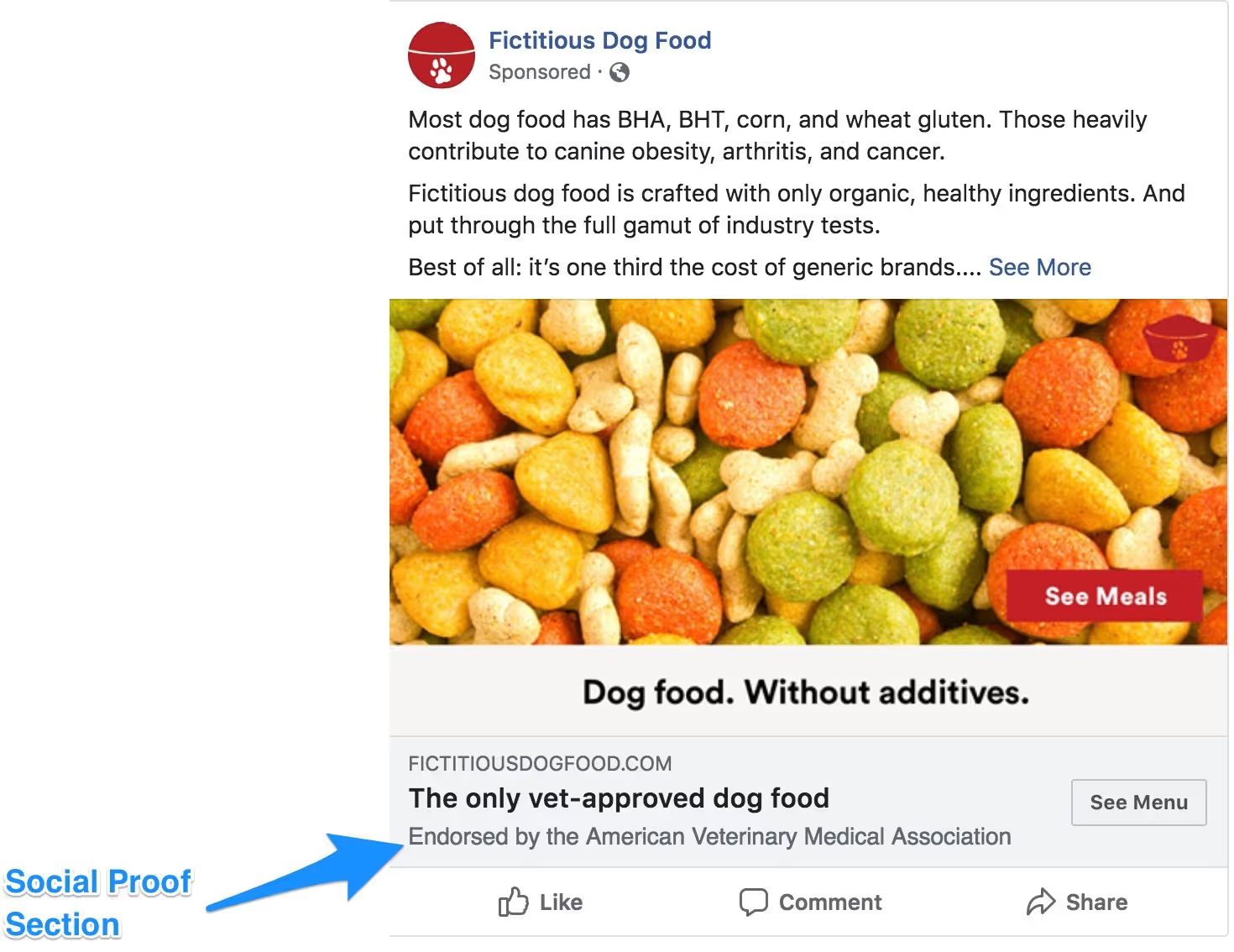
If you have a totally new product, use this copy section for something other than social proof. Add a secondary value prop or proactively address concerns someone would have.
5. Retargeting Ads
Retargeting ads are shown to audiences who have interacted with your brand or product in some way in the past.
Maybe they visited your website, FB or IG page. Depending on where you set up your retargeting pixel (for example, a specific page on your website) you can create ads that speak directly to this audience group.
The message you deliver to someone who already interacted with your brand should be different from a message you deliver to a stranger.
Specifically, they're farther along their buying journey. You can assume they know more about your product, and you can hit them with more specific copy to compel them to buy.
This means you don't have to waste time explaining what your product is. It's more important to cover all the different problems your product solves, in the hope that one hits. In other words, emphasize the use cases, and not the product in general.


